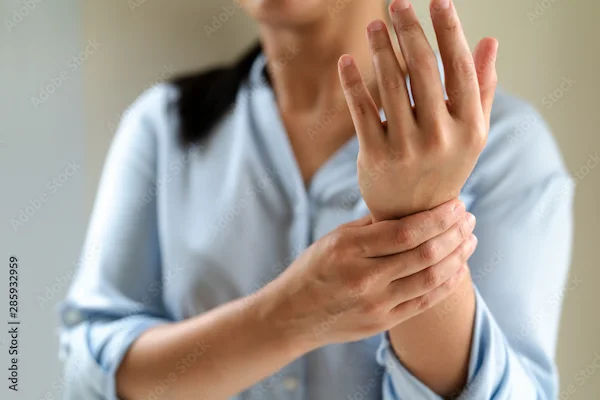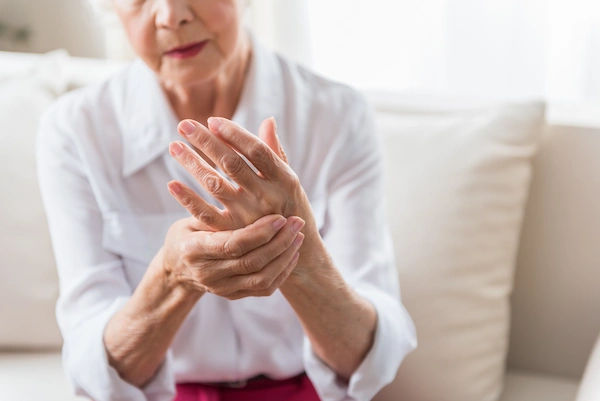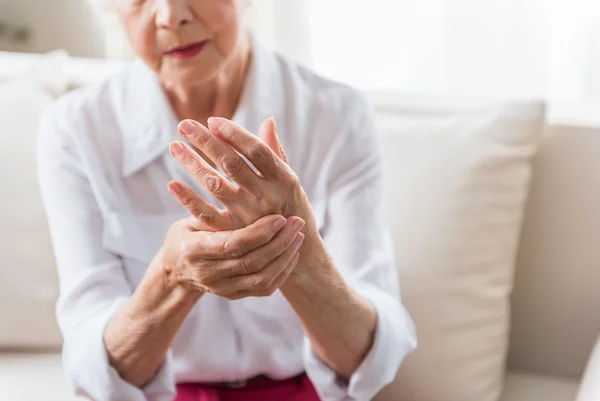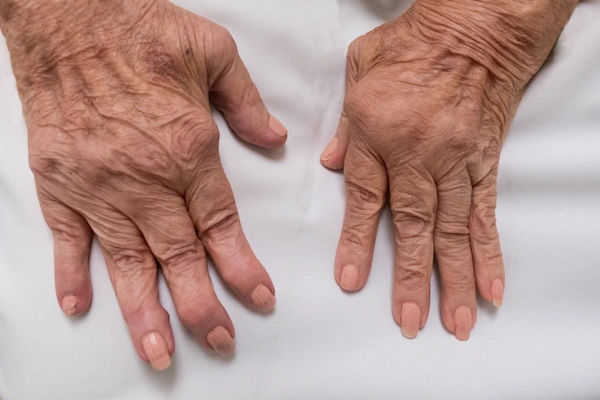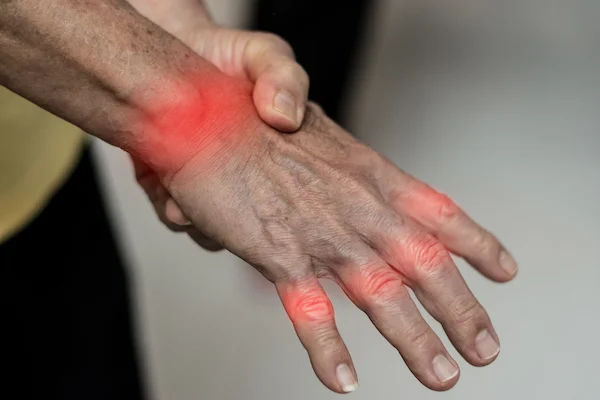Guide to How Will You Identify Arthritis
Struggling with joint pain? Learn how to identify the early signs and symptoms of arthritis, including stiffness, swelling, and reduced mobility. This comprehensive guide helps you understand the different types and when to see a doctor. Get the facts on recognizing arthritis now.

Written by Dr. Dhankecha Mayank Dineshbhai
Reviewed by Dr. J T Hema Pratima MBBS
Last updated on 24th Oct, 2025

Introduction
If your joints feel achy, stiff, or swollen—and you’re wondering, “Is this arthritis?”—you’re not alone. Arthritis is a broad term for more than 100 conditions that affect joints and the tissues around them. Some types are mechanical (like osteoarthritis), while others are inflammatory (like rheumatoid arthritis or gout). Learning to spot early clues can help you get the right diagnosis and treatment sooner, often preventing long-term damage and improving daily comfort.
In this practical guide, we’ll show you how to identify arthritis using simple self-checks, how to tell common types apart, and which symptoms mean you should see a doctor. We’ll also walk through the tests doctors use, how to manage pain and stiffness at home, and ways to keep moving without making things worse. Whether you suspect early arthritis in your hands or are dealing with knee pain after years of activity, you’ll find clear, step-by-step advice—plus tips to prepare for a medical visit, and when to seek urgent care.
If symptoms persist beyond two weeks or you notice a hot, swollen joint with fever, consult a doctor online with Apollo24|7 for further evaluation.
Understanding Arthritis: What It Is and Isn’t
Arthritis means joint inflammation—but that doesn’t always equal constant swelling and redness. Often, the earliest
signs are stiffness after rest, pain with certain movements, or reduced range of motion. Broadly, arthritis falls into two
camps:
- Mechanical (degenerative) pain, common in osteoarthritis (OA): It worsens with use and improves with rest. Stiffness is
usually brief (a few minutes) after inactivity—sometimes called “gelling.” - Inflammatory pain, common in rheumatoid arthritis (RA), gout, psoriatic arthritis: It’s worse in the morning or after
rest, with stiffness that can last 30 minutes or longer, and may improve with gentle movement.
Myths to drop:
- “Only older people get arthritis.” Inflammatory forms can start in young adults; juvenile idiopathic arthritis affects
children. - “Weather causes arthritis.” Weather shifts can affect symptoms, but they don’t cause the condition.
- “If blood tests are normal, I don’t have arthritis.” Many people with OA have normal labs; early RA can have negative
blood tests.
A quick reality check: about 1 in 4 adults in the United States has doctor-diagnosed arthritis, making it a leading cause
of work disability [1]. Understanding which pattern you have—mechanical or inflammatory—helps narrow the likely
type and guide next steps.
Consult a Top Urologist
Types of Arthritis and How to Tell Them Apart
Osteoarthritis (OA)
- Hallmarks: Pain that worsens with activity, short-lived stiffness after rest, bony enlargements in hands
(Heberden’s/Bouchard’s nodes), creaking or grinding (crepitus), and gradual onset. Knees, hips, hands, and spine are
common. - Clues: The “gelling phenomenon” after sitting; pain with stairs (knee), or after long walks (hip).
- Risk factors: Age, prior joint injury, obesity, and occupational overuse.
Rheumatoid arthritis (RA)
- Hallmarks: Symmetric small-joint pain and swelling (hands/feet), morning stiffness lasting longer than 30–60 minutes,
fatigue. Untreated, it can erode joints. - Labs: Rheumatoid factor (RF) and anti-CCP antibodies can support the diagnosis; anti-CCP is highly specific.
ESR/CRP is often elevated during inflammation. - Pattern: Additive and persistent (new joints become involved over time), with flares and remissions.
Gout and CPPD (pseudogout)
- Gout: Sudden, severe pain in one joint (often big toe), swelling, warmth, and redness—commonly at night. Triggers
include alcohol, high-purine foods, dehydration, or illness. Uric acid may be high, but joint fluid crystals confirm
diagnosis [5]. - CPPD: Similar abrupt flares, often in knees or wrists, due to calcium pyrophosphate crystals.
Psoriatic arthritis (PsA) and related spondyloarthritis
- Hallmarks: Joint pain with psoriasis skin plaques or nail pitting; dactylitis (“sausage digits”); enthesitis (tendon
insertions); back pain with morning stiffness. - Pattern: Asymmetric, can affect small and large joints, and the spine [2].
Juvenile idiopathic arthritis (JIA) and lupus-related arthritis
- JIA: Persistent joint swelling and stiffness in children; may include fevers or eye inflammation.
- Lupus: Can cause migratory joint pain with rash, photosensitivity, or other systemic features.
Unique insight: The tempo of symptoms is a strong clue. Explosive onset in a single joint points toward gout or
infection. Slowly progressive, activity-related pain points toward OA. A few weeks of symmetric small-joint swelling
points toward RA.
Early Symptoms and Self-Checks You Can Do at Home
Morning stiffness timer
- After waking, time how long it takes before your joints feel “loose.” Under 10 minutes often suggests mechanical OA;
30 minutes or more suggests inflammatory arthritis (RA, PsA). This is a practical screen, not a diagnosis.
Gelling test
- Sit for 30–60 minutes, then stand and walk. OA often causes brief stiffness (“gelling”) that eases after a minute or two of
movement. Inflammatory arthritis remains stiff longer.
Hand quick screen (early signs of arthritis in hands)
- Grip test: Open a jar, squeeze a soft ball, or turn a key. Pain at the base of the thumb may suggest OA; diffuse knuckle
swelling and prolonged morning stiffness may suggest early RA. - Look for redness, warmth, or doughy swelling over knuckles (MCPs). Note symmetric vs one-sided.
Knee quick screen (osteoarthritis symptoms in knees)
- Sit-to-stand: Rise from a chair five times without using hands. Significant pain or crepitus suggests OA.
Swelling/warmth that’s tender with morning stiffness suggests inflammatory disease.
Pattern clues
- Symmetry: Symmetric small-joint involvement suggests RA; asymmetric may suggest PsA or OA.
- Location: Big-toe attacks suggest gout; base-of-thumb pain suggests OA; back stiffness in young adults suggests
spondyloarthritis. - Triggers: Alcohol and high-purine meals can trigger gout flares; overuse worsens OA.
Urgent signs (septic arthritis emergency symptoms)
- A single, very painful, hot, swollen joint with fever, chills, or feeling unwell can be septic arthritis and needs emergency
care the same day [5].
If symptoms persist beyond two weeks or you can see visible swelling, consult a doctor online with Apollo24|7 to
discuss whether tests like ESR, CRP, uric acid, or rheumatoid factor are appropriate. Apollo24|7 also offers a
convenient home collection for lab tests.
Getting a Diagnosis: Exams, Tests, and Imaging
What your clinician looks for
- History: Onset, duration, morning stiffness duration, symmetry, number of joints, flares vs constant pain, injury history,
rashes or psoriasis, eye symptoms, family history. - Physical exam: Tender vs swollen joints, warmth, range of motion, crepitus, nodules, nail pitting, dactylitis, enthesitis.
Blood tests (rheumatoid factor vs anti-CCP test)
- ESR and CRP: Markers of inflammation; often elevated in flare-ups of RA, PsA, or gout [3].
- RF and anti-CCP: Anti-CCP is more specific for RA; positive results plus clinical features support RA diagnosis.
- Uric acid: Elevated levels support gout, but joint fluid analysis is definitive.
- Others: ANA for lupus; HLA-B27 for spondyloarthritis in the right context.
Imaging (imaging for arthritis x-ray vs MRI)
- X-rays: Useful for OA (joint space narrowing, osteophytes) and long-standing inflammatory damage.
- Ultrasound: Detects active synovitis, erosions, and crystal deposits earlier than X-ray.
- MRI: Sensitive for early inflammatory changes and bone marrow edema; used when diagnosis remains uncertain.
Joint aspiration (arthrocentesis)
- Why it’s definitive: Analyzing synovial fluid can identify crystals (gout, CPPD) or infection (septic arthritis), which can
be time-sensitive emergencies. - What it involves: A sterile needle draws fluid from the joint; analysis includes cell count, crystals, Gram stain, and
culture.
Data point: Arthritis affects about 58.5 million adults in the U.S., and timely diagnosis helps prevent disability and job
loss [1]. If your condition does not improve after trying home strategies, book a physical visit to a doctor with Apollo24
|7. If labs are ordered, Apollo24|7 offers home collection for tests such as ESR, CRP, RF, anti-CCP, and uric acid.
What Else Could It Be? Conditions that Mimic Arthritis
- Tendinitis and bursitis (arthritis vs tendinitis differences)
- Tendinitis: Pain with specific tendon use (e.g., lifting with the thumb side for De Quervain’s), usually without joint
swelling or morning stiffness lasting 30+ minutes. - Bursitis: Localized tenderness over a bursa (shoulder, hip, knee). Swelling may be superficial, not inside the joint.
Overuse syndromes and sprains
- Pain is linked to a particular activity, often improving with rest and targeted physical therapy. Imaging may be normal
or show soft-tissue changes rather than joint inflammation.
Fibromyalgia and widespread pain
- Diffuse pain, sleep issues, fatigue, and “brain fog.” Joints may feel tender, but there’s no true inflammatory swelling.
Labs and imaging are often normal.
Infection-related joint pain
- Viral illnesses can cause transient joint aches. However, a single, hot, red joint with fever suggests septic arthritis; this
requires urgent evaluation.
Unique insight: Think “location + timing + triggers.” If pain pinpoints to tendons and flares with a single movement,
tendinitis is likely. If joints are visibly swollen, warm, and morning-stiff for an hour, inflammatory arthritis rises to the
top of the list.
Managing Arthritis Day to Day: Treatments and Lifestyle
Movement as medicine (best exercises for arthritis pain)
- Strong evidence supports low-impact aerobic activity (walking, cycling, swimming), strength training, and flexibility
work for both OA and inflammatory arthritis. Consistent, moderate movement reduces pain, improves function, and
helps weight control. - Start small: 10-minute walks, chair stands, gentle range-of-motion flows. If you flare, scale back intensity, not
movement entirely.
Medications: what they do and when
- Pain relief: Acetaminophen can help pain; NSAIDs reduce pain and inflammation (check suitability with your doctor).
- Flare control: Short steroid courses or joint injections may be used for inflammatory flares.
- Disease control: DMARDs (e.g., methotrexate) and biologics (e.g., TNF inhibitors) for RA/PsA; they reduce
inflammation and prevent damage. - Gout specifics: Colchicine, NSAIDs, or steroids for flares; urate-lowering therapy (allopurinol) to prevent recurrences.
Procedures and surgery
- Injections: Corticosteroid injections can relieve localized inflammation; hyaluronic acid is sometimes used in knee OA.
- Surgery: Joint replacement for severe OA; synovectomy or tendon procedures in select inflammatory cases.
Sleep, stress, and work
- Good sleep and stress management lower pain perception and flare frequency. Occupational therapy can tailor joint-
protection techniques at work and home.
Unique insight: Train “joint-friendly strength”—glutes and core stabilize knees and hips; forearm and intrinsic hand
strength support finger joints. Five minutes a day can meaningfully reduce joint load.
If your symptoms interfere with daily tasks despite home measures, consult a doctor online with Apollo24|7 to tailor a
plan and discuss whether medications, injections, or physical therapy are right for you.
Prevention, Tracking, and When to Seek Help
Joint protection and weight management
- Every 1 kg of weight loss reduces knee joint load by roughly 4 kg with each step; even modest loss eases OA pain [4].
- Use assistive tools: jar openers, cushioned insoles, ergonomic keyboards.
Food and supplements (anti-inflammatory diet for arthritis)
- Diet: A Mediterranean-style pattern (vegetables, fruits, whole grains, fish, olive oil) is linked to reduced inflammation and improved symptoms in RA and OA [2,4].
- Supplements: Omega-3s can help with inflammatory arthritis; turmeric has modest evidence. Glucosamine/chondroitin
show mixed results for OA. Always discuss supplements with a clinician.
Symptom tracking and flare planning
- Keep a simple diary: morning stiffness minutes, pain scores, activities, triggers (e.g., a high-purine meal for gout flare
symptoms and triggers). - Use a weekly snapshot to adjust activity and discuss trends with your clinician.
Clear rules for when to call a doctor (when to see a rheumatologist)
- Call now: Single hot, swollen joint with fever; new severe joint pain after illness or procedure; inability to bear weight.
- Call soon (within 2 weeks): Persistent morning stiffness >30 minutes; visible swelling; symmetric small-joint pain; new
dactylitis or nail pitting with joint symptoms. - Consider a specialist: If you suspect RA, PsA, or recurrent gout, ask for a rheumatology referral.
If your condition does not improve after trying these methods, book a physical visit to a doctor with Apollo24|7. For
monitoring, Apollo24|7 offers home collection for tests like ESR, CRP, uric acid, vitamin D, and HbA1c when
metabolic factors are relevant.
Conclusion
Identifying arthritis starts with noticing patterns: where the pain is, how long morning stiffness lasts, whether joints are swollen, and what triggers symptoms. Gradual, activity-linked pain with brief stiffness tends to point to osteoarthritis, while prolonged morning stiffness, visible swelling, and symmetric small-joint involvement raise suspicion for inflammatory arthritis such as rheumatoid or psoriatic arthritis. A sudden, extremely painful, hot joint—especially with fever—can signal gout or infection and needs urgent care.
No single clue tells the whole story. That’s why a careful history, physical exam, targeted blood tests (ESR, CRP, RF, anti-CCP, uric acid), and the right imaging (X-ray, ultrasound, or MRI) are often used together. The encouraging news: earlier identification often leads to better outcomes, whether your plan is focused on movement therapy, weight management, symptom relief, or disease-modifying treatments.
Use the self-checks in this guide to organize your observations and start a conversation with a clinician. If your symptoms persist beyond two weeks or you’re unsure which path to take, consult a doctor online with Apollo24|7 to discuss next steps. If blood work is recommended, Apollo24|7 provides a convenient home sample collection. With the right diagnosis and a tailored plan, most people reduce pain, move more, and protect their joints for the long term.
Consult a Top Urologist
Consult a Top Urologist

Dr. Rohit Bhattar
Uro Oncologist
14 Years • MBBS, MS, MCh (Urology), Fellowship in Uro-oncology and Robotic Urology (United Kingdom)
Ahmedabad
Apollo Hospitals Gandhinagar, Ahmedabad
(100+ Patients)

Dr. Moin Mohammed Bavakatti
Urologist
13 Years • MBBS, MS (General Surgery), Mch (Urology), DNB (Urology), Diploma in Minimal Access Surgery, Fellow of Internal College of Robotic Surgeons), Vinci Surgical system, Fellow in Endocrinology, Clinical and Research fellow in Laparoscopic Urology, Laser Endourology & Laparoscopic & Robotic Urology, Fellowship in 3D laparoscopic Urology
Bengaluru
Dr Moin Mohammed Bhavikatti Clinic, Bengaluru
(150+ Patients)
Dr. J Chaithanya
Urologist
6 Years • MBBS MS GENERAL SURGERY MCH UROLOGY
Bengaluru
Apollo Medical Center, Marathahalli, Bengaluru
Dr. Mohammed Rehan Khan
Urologist
8 Years • MBBS, MS (General Surgery), Mch (Urology)
Barasat
Diab-Eat-Ease, Barasat
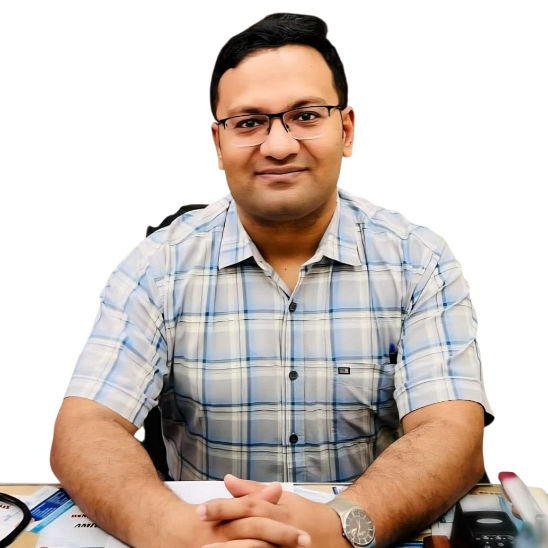
Dr. Gaurab Dasgupta
Urologist
14 Years • MBBS, MS General Surgery, MCH Urology, FMAS
Kolkata
MCR SUPER SPECIALITY POLY CLINIC & PATHOLOGY, Kolkata
Consult a Top Urologist

Dr. Rohit Bhattar
Uro Oncologist
14 Years • MBBS, MS, MCh (Urology), Fellowship in Uro-oncology and Robotic Urology (United Kingdom)
Ahmedabad
Apollo Hospitals Gandhinagar, Ahmedabad
(100+ Patients)

Dr. Moin Mohammed Bavakatti
Urologist
13 Years • MBBS, MS (General Surgery), Mch (Urology), DNB (Urology), Diploma in Minimal Access Surgery, Fellow of Internal College of Robotic Surgeons), Vinci Surgical system, Fellow in Endocrinology, Clinical and Research fellow in Laparoscopic Urology, Laser Endourology & Laparoscopic & Robotic Urology, Fellowship in 3D laparoscopic Urology
Bengaluru
Dr Moin Mohammed Bhavikatti Clinic, Bengaluru
(150+ Patients)
Dr. J Chaithanya
Urologist
6 Years • MBBS MS GENERAL SURGERY MCH UROLOGY
Bengaluru
Apollo Medical Center, Marathahalli, Bengaluru
Dr. Mohammed Rehan Khan
Urologist
8 Years • MBBS, MS (General Surgery), Mch (Urology)
Barasat
Diab-Eat-Ease, Barasat

Dr. Gaurab Dasgupta
Urologist
14 Years • MBBS, MS General Surgery, MCH Urology, FMAS
Kolkata
MCR SUPER SPECIALITY POLY CLINIC & PATHOLOGY, Kolkata
More articles from Arthritis
Frequently Asked Questions
1) What are the earliest signs of arthritis in hands?
Aching or stiffness with morning use, difficulty opening jars, and mild swelling around knuckles. Morning stiffness lasting longer than 30 minutes suggests inflammatory arthritis; brief stiffness suggests osteoarthritis.
2) Do I need both rheumatoid factor and anti-CCP tests for RA?
Not always, but together they improve accuracy. Anti-CCP is more specific for RA. Some people with early RA have negative blood tests; diagnosis relies on the full clinical picture.
3) How do I tell arthritis vs tendinitis?
Tendinitis pain centers over a tendon and flares with a specific movement, usually without prolonged morning stiffness or joint swelling. Arthritis pain involves the joint, often with stiffness and sometimes visible swelling.
4) What triggers a gout flare, and can I prevent it?
Triggers include alcohol, high-purine foods, dehydration, illness, or certain meds. Prevent flares with hydration, diet changes, managing weight, and—if you have recurrent attacks—urate-lowering therapy as advised by your doctor.
5) When should I see a rheumatologist?
If you have persistent morning stiffness >30 minutes, symmetric small-joint swelling, dactylitis or nail pitting with joint pain, or recurrent gout flares, ask for a referral. If symptoms persist beyond two weeks, consult a doctor online with Apollo24|7 for guidance.
